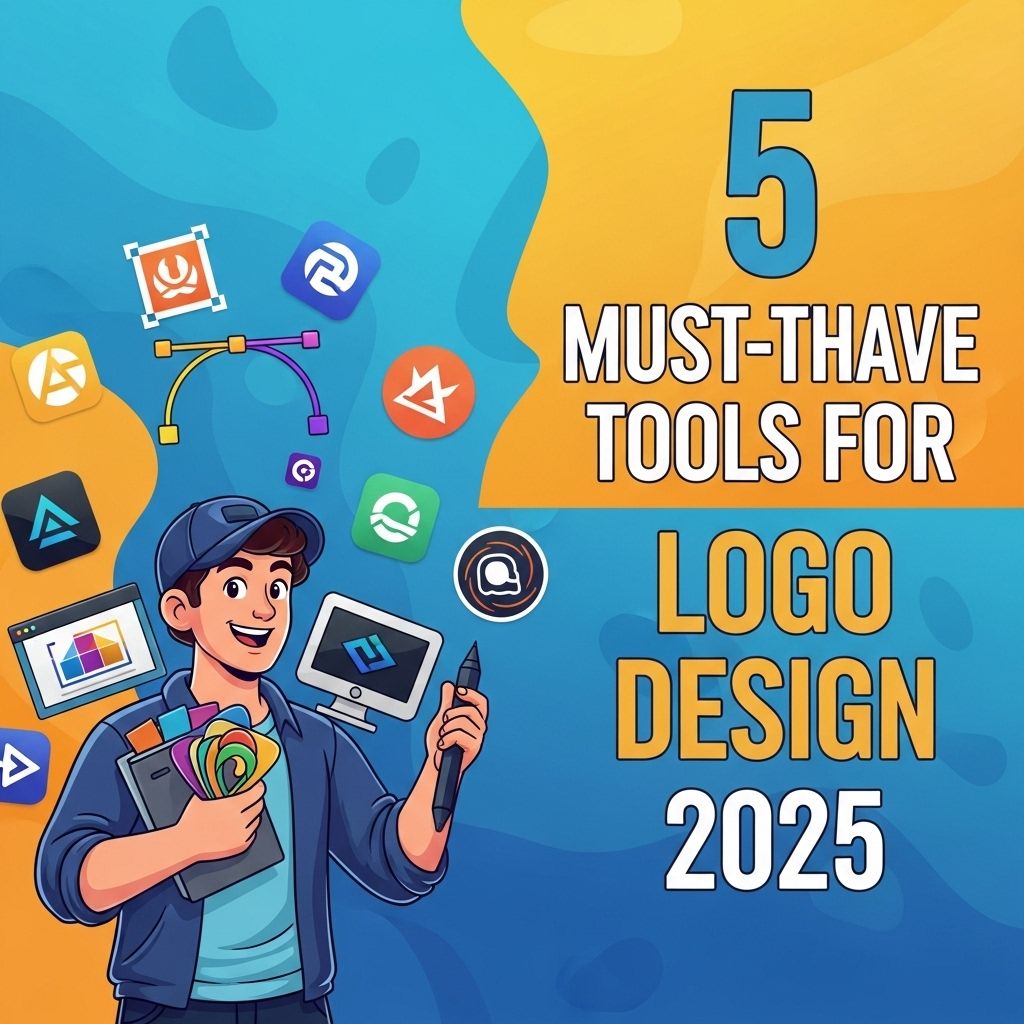In the ever-evolving world of graphic design, having the right tools at your disposal can significantly impact your efficiency and creativity, especially when it comes to logo design. As we look ahead to 2025, various software and platforms have emerged to streamline the design process, enhance collaboration, and facilitate innovative design techniques. This article delves into the five must-have tools for logo design that any aspiring or professional designer should consider integrating into their workflow.
1. Adobe Illustrator
Adobe Illustrator has long been the gold standard for vector graphic design, and it continues to be a powerful tool for logo designers. With its robust features and versatility, Illustrator allows designers to create scalable logos that maintain their quality across various sizes and formats.
Key Features
- Vector Graphics: Allows for infinite scalability without loss of quality.
- Artboards: Multiple artboards help manage different logo variations in one file.
- Creative Cloud Integration: Seamlessly integrates with other Adobe applications for an efficient workflow.
Learning Resources
Adobe offers extensive tutorials and resources for beginners and advanced users alike, making it easier to master the tool.
2. CorelDRAW
CorelDRAW is another essential tool for logo design that caters to both beginners and experienced designers. It offers a user-friendly interface and a range of features that allow creative freedom while still being powerful enough for advanced projects.
Benefits of CorelDRAW
- Intuitive Design Tools: Features like the Pick Tool, Shape Tool, and Text Tool simplify the design process.
- Customizable Interface: Users can tailor their workspace to fit individual workflow preferences.
- Real-Time Collaboration: Essential for teams, allowing multiple users to work on designs simultaneously.
3. Canva
Canva has revolutionized the way non-designers approach graphic design. It provides an accessible platform for creating professional-looking logos without requiring extensive design skills.
Why Choose Canva?
- Templates: Thousands of customizable logo templates to expedite the design process.
- User-Friendly: Simple drag-and-drop interface that anyone can use.
- Affordable Options: A free tier and budget-friendly subscriptions make it accessible for small businesses.
Best Practices for Using Canva
- Start with a specific template that aligns with your brand personality.
- Customize colors, fonts, and elements to suit your style.
- Export in high-resolution formats for print and digital use.
4. Sketch
Sketch has become increasingly popular among digital designers, particularly for web and mobile applications. However, it also has features tailored for logo design, making it a worthwhile addition to your toolkit.
Advantages of Sketch
- Symbols and Styles: Reusable elements enhance consistency across designs.
- Collaboration Features: Real-time feedback and sharing options for team projects.
- Plugins: Extensive library of plugins to extend functionality.
5. Figma
Figma is a web-based design tool that promotes collaboration among teams. It’s particularly valuable for remote teams or designers working on logos that require input from multiple stakeholders.
Collaborative Design
Figma allows designers to work simultaneously on a project, making it easy to share ideas and make instant adjustments based on feedback.
Features of Figma
- Cloud-Based: Accessible from anywhere, facilitating remote work.
- Version Control: Keeps track of changes and allows for easy rollback to previous versions.
- Design Systems: Share reusable components and styles across projects for brand consistency.
Comparing the Tools
| Tool | Best For | Pricing | Key Feature |
|---|---|---|---|
| Adobe Illustrator | Professional Designers | Monthly Subscription | Vector Graphics |
| CorelDRAW | Beginner to Advanced | One-Time Purchase | User-Friendly Interface |
| Canva | Non-Designers | Free/Paid Plans | Templates |
| Sketch | Digital Designers | Annual Subscription | Symbols |
| Figma | Collaborative Teams | Free/Paid Plans | Real-Time Collaboration |
Conclusion
As we move towards 2025, the landscape of logo design tools continues to expand and evolve. Each tool offers unique features that cater to different needs – from professional graphic designers to those just starting. By incorporating one or more of these must-have tools into your design arsenal, you can elevate your logo design process, making it more efficient, collaborative, and innovative.
FAQ
What are the essential tools for logo design in 2025?
In 2025, essential tools for logo design include Adobe Illustrator, CorelDRAW, Canva, Affinity Designer, and Sketch.
How does Adobe Illustrator benefit logo designers?
Adobe Illustrator provides advanced vector graphic capabilities, allowing designers to create scalable and high-quality logos.
Is Canva a good tool for professional logo design?
Yes, Canva offers user-friendly templates and design elements that can help both beginners and professionals create stunning logos quickly.
What features make Affinity Designer ideal for logo design?
Affinity Designer combines vector and raster design tools, offering flexibility and precision, making it ideal for creating detailed logos.
Can I design logos on a mobile device?
Yes, tools like Canva and Adobe Spark allow you to design logos on mobile devices, providing convenience and accessibility.
What trends should I consider when designing a logo in 2025?
When designing a logo in 2025, consider trends such as minimalism, vibrant colors, and responsive designs that adapt to various screen sizes.




